There are those who can study maps for hours on end, looking at paths and trails crossing ridges, reaching mountain summits and descending valleys, planning new adventures and reminiscing over past days – and I’m one of them. So, when the latest Anavasi hiking map to our area (Topo 25,Crete 11.13) indicated a “tower” – ‘Pirghos’ – on a summit above Kantanos, and enquiries locally suggested there was a ruined Byzantine fortress, we just had to go and explore further.
The unnamed summit is 1037m high, and we “climbed” 880m of it by car, driving from Kantanos through Anisaraki and Bambakados to the highest point on the road to Temenia, from close to where a track heads off north-east. January ; deep snow covered the White Mountains away to our right, and with the temperature barely above freezing, warm and windproof clothing, gloves and hats were essential – not the Cretan climate which tourists usually experience …..
Some map-reading and route-finding was required, along tracks with a couple of (open) gates which brought us to a broad plateau at around 920m, marked on the map as ‘Dzikounaria’. There are no official “rights of way” in Crete, as in UK and maybe other countries, so whether this is private land is dubious, although it’s probable. But we met no-one to ask us the usual questions
of “Where are you from?” and “Where are you going to?” – so what a friend calls “judicious trespass” was not necessary.
From the plateau we passed through another gate (a notice in Greek warns ‘Hunting Prohibited’) headed uphill, to the right of a wire fence, and reached the ruins of the reputedly Byzantine tower. Tony Fennymore wrote : “ In 330 AD, Crete found itself part of the Byzantine Empire, and remained so until 824 AD when it was seized by Arab pirates who used it as a base. After numerous attempts the Byzantines eventually won it back in 961 AD, and it remained in their hands until 1204 AD , when Crete came under Venetian rule.” *
Presumably erected as a watch-tower or beacon, rather than a defensive structure, the ‘fortress’ gave us commanding views in all directions, especially over the Kantanos valley now far below, SE towards Rodovani and Sougia, and NE toward Agios Zinas, 1331m, our “Blue Moon” summit (see ‘Explore’ August 2015.) Little remains – a collapsed tower some 2m high, with a surrounding wall which afforded grateful shelter out of the sharp wind and snow flurries. Some imagination is required, and if there was a small armed force here, as at the Dorian fortified towers at Vlithias and above Anidri (see ‘Explore’ – January 2017) it would have been an unpopular posting.
We had taken little more than an hour to reach the summit, marked by a concrete pillar, so rather than returning the same way, we opted to continue north along the ridge. There’s no path at all, and it’s not easy going over rocky terrain ; the fence continued to our left, and several more crossed the ridge, all easily negotiated.
A slight dip, then a rise to a second summit at 1023m – that’s no great altitude in Crete, but higher than England’s highest mountain, Scafell Pike at a mere 978m. Beyond here is an area marked on the map ‘Achladhia’ – meaning ‘pear trees’ – and there was a small copse, whether accidental or intentional, but incongruous at this height. In the lee of the ridge, out of the wind, we stopped for lunch of pastries from the excellent bakery in Kantanos.
Soon afterwards, at Distrata (‘road junction’), we joined the track, and snow level, at the SW end of the long Ag. Zinas ridge. Inevitably a snowball fight, before, with clouds darkening and more snow imminent, we hastened down to Kantanos, the best part of two hours away.
En route we paused at the isolated shepherd’s hut, housing a diverse and almost museum-type collection of tools, and above it the small church of St. John the Theologian, rarely visited except on its “name day.”
Below the track, bare plane trees gave an art exhibition of arboreal nature, but as Shelley observed … “ If Winter comes, can Spring be far behind ?”
Although the walk up to the “Pirghos” is a worthwhile expedition, I doubt if many will repeat this entire demanding route – if you do, let me know, I’ll be impressed. But we enjoyed a rewarding and satisfying January day in the hills, and to badly misquote the words of James Elroy Flecker (“Hassan”) – “ We are the explorers Barry, and we shall go …. always a little further.”
* From the Introduction to “Fenny’s Hania” – a guided walking tour of Hania old town.
A record number of entries for the Christmas Puzzle, from seven different countries. The winner was Hannah Kilduff from France, who wins the €10 voucher for “To Delfini” bookshop. Congratulations to Hannah, and thanks to everyone who entered. The correct answer was … of course … ANTONIOS

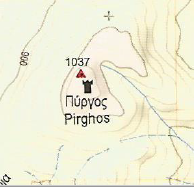
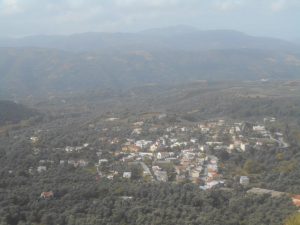
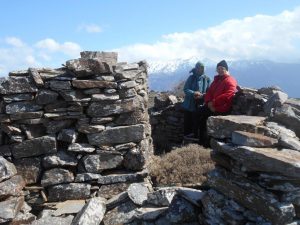
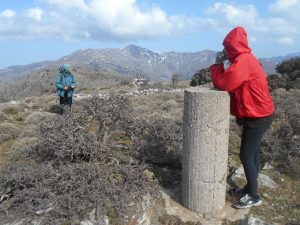
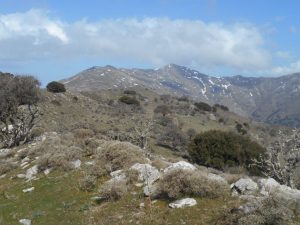
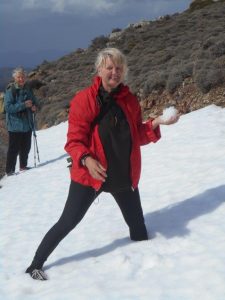
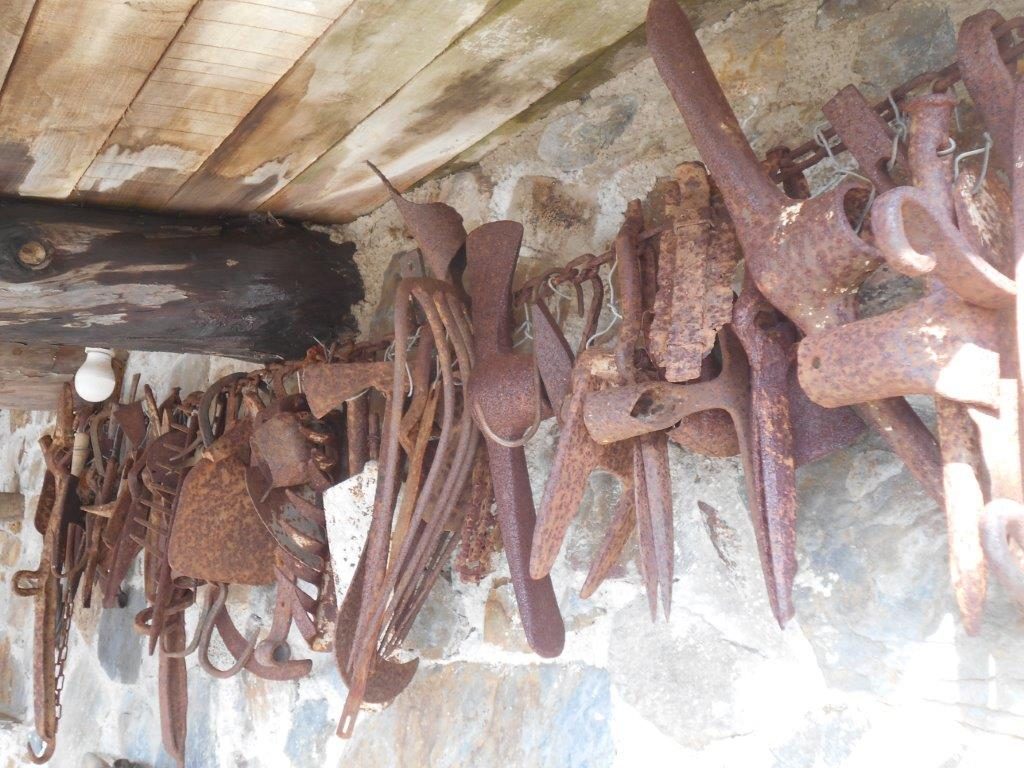
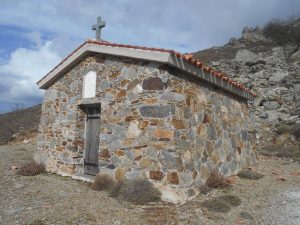
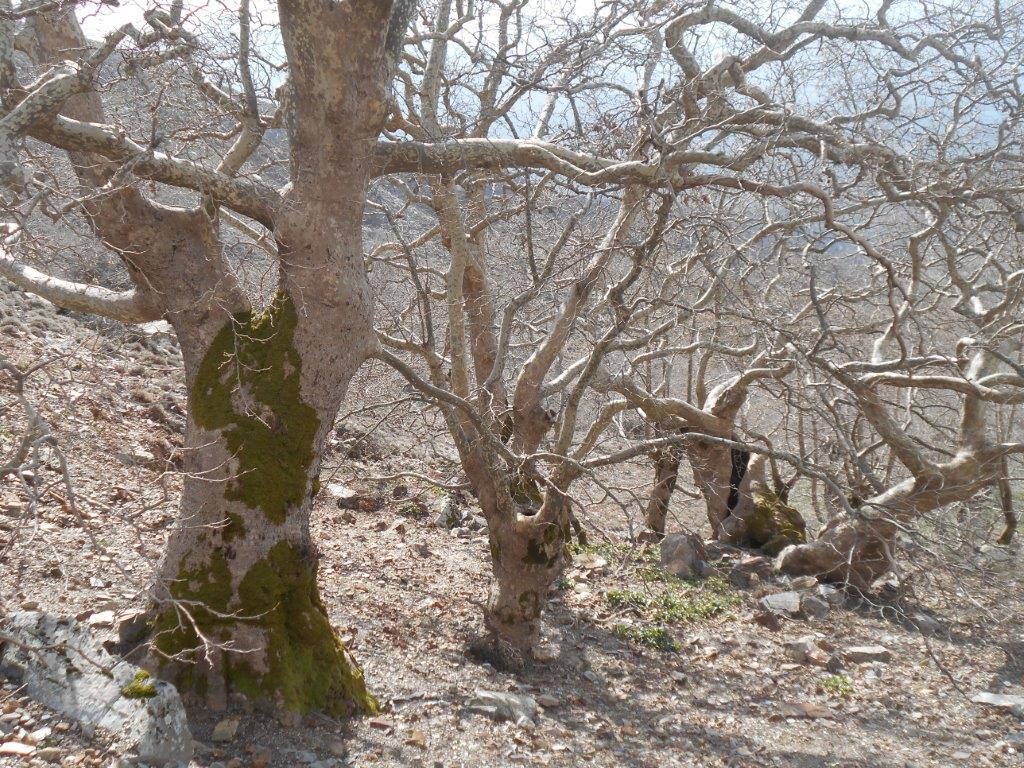

3 comments
Greetings. I enjoyed your article about the hills above Kantanos from Jan 23, 2018 (fyi, this is the correct spelling. “Kandanos” was introduced as a spelling for the town by the Nazis in 1941). I was there a few weeks before you. Both of my parents were Kantaniotes. I thought I’d let you know that the shepherds hut that you mention is owned by Yiannis Katakis. It was his father’s, who was a full time, old school shepherd. Hence all of the old tools. Yianni and his brother Nektarios built and own the church of St. John, which you also mentioned. Yianni owns the coffee shop in the center of Kantano that sells the shepherd crooks/canes. It’s two buildings away from the town square, and in front of the Byzantine St. Nicolas church. There is no sign or name for his cafe. He and his wife Maria are wonderful people, and worth a visit next time you’re there.
Thanks for the correction John, confirmed by Samantha at the ‘Plateia’ taverna, who tells me that the spelling Kantanos (????????) dates back to Minoan times. I will use this in future references to the town. I know well the ‘cafenio’ you mention, very traditional, and the wooden staffs on sale – ‘katsouna’ – are superbly crafted and each one unique.
Author
I wonder how much he charges for his katsounas. I have one that I bought in a village in central Crete – I chose one that is not as long and heavy as some but very strong.